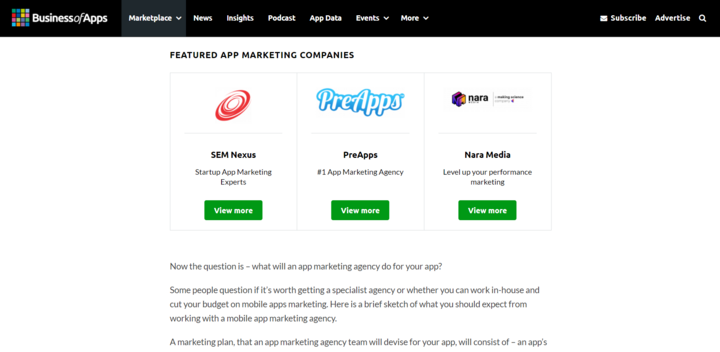Google’s FLoC signals the need for publishers to grow diverse revenue streams
By: Ian Tang | June 24, 2021 | Native Advertising, data transformation, search, and security
Google’s recent announcements about its “privacy sandbox” – a collection of browser-based technologies the tech giant is pushing as the new industry standard for programmatic ad targeting – offers a glimpse of online advertising’s probable future following the inevitable demise of third-party cookies.
Not surprisingly, that future is one of even greater commoditization of ad inventory that’s locked down by a handful of major platform owners, most notably Google.
In this post, I’ll take a look at Google’s new ad targeting tech, particularly the headline-grabbing FLoC, or Federated Learning of Cohorts, and how publishers can respond to the ongoing erosion of what was once a primary revenue source.
The (overdue) death of the third-party cookie
Google first announced its privacy sandbox initiative a couple years ago, about the same time it swore to eliminate support for third-party cookies in its Chrome web browser. Other browsers, including Apple’s Safari, already blocked third-party cookies, but Chrome controls about 65 percent of the global browser market, so Google’s announcement put a clear stake in the heart of what has been the backbone in online advertising tech.
Third-party cookies, once installed on a user’s system, track behaviors across all the online channels those users visit, and then report that information back to a server-side platform for ad targeting. Third-party cookies also can be used as an individual beacon for sending ads to a specific user, usually based on a previous action. This kind of retargeting is critical in B2B (Business to Business) marketing, where a prospect typically interacts with 10 or more different ads before making a purchase decision.
Google's plans to scrub third-party cookies from the Chrome browser have been delayed to 2023. But the end is clearly coming. Most everyone agrees that third-party cookies are problematic. They can pose a serious risk to individuals’ privacy and are generally just a careless way to do business. But personalized ad targeting has become too valuable to simply scrub entirely, so Google and its rivals have been jockeying to create an alternative.
Enter the “privacy sandbox.”
Privacy or Privateering?
Google’s solution is a collection of browser-based technologies that anonymize a user’s identity and then analyzes their behavior and demographic information to group them in “cohorts” of similar individuals. It’s these cohorts, and not specific individuals, that can be targeted with personalized ads.
The most notable of these initiatives is Federated Learning of Cohorts, or FLoC, the privacy sandbox’s core audience segmentation tool. Cohorts can be as small as 1,000 or so people, a pretty narrow sampling, particularly in B2C (Business to Consumers) marketing. Google has been running some demos of the new technologies, recently suggesting that conversions are holding at about 95 percent of current rates.
Again, Google promises to never target an individual user. Advertisers can simply purchase runs against cohorts and hope that the similarities determined by Google’s AI are close enough to continue driving conversions. Cohorts can be re-built every week to enable retargeting on new observed behavior. And there are other components of the privacy sandbox, most notably FLEDGE, that appear to be devoted to analyzing brand loyalty.
The behavioral data used for building cohorts is gathered by Chrome or other Google-owned platforms, such as Maps or YouTube. In the era of third-party cookies, competing DSPs could not enter Google’s data environment, but they could see into it by capturing much of the same behavioral data via their own persistent cookies. Not anymore – this behavior will now be a walled garden exclusively for Google’s use.
Google also does not plan to label its cohorts with market-friendly terminology or make its data available to identity triangulation services, which many B2B marketers use to map ad views and clicks to users who have already downloaded a whitepaper through other channels.
Not everyone is playing along
As you might guess, not everyone is crazy about Google’s plan. Hardcore privacy advocates like the Electronic Frontier Foundation are simply never going to happy about any form of behavioral tracking. Google’s advertising competitors see FLoC simply as a ploy to lock down and eventually grow Google’s $182.5 billion chunk of the online advertising market. Some observers also point to the TURTLEDOVE “interest groups” component of the privacy sandbox as a possible backdoor to the “no one-to-one ad targeting” pledge.
At any rate, the implications for publishers are clear:
- As Google and other major platform owners (Facebook, Microsoft, Apple) tap down competition, ad inventory will demand lower and lower CPM (Cost-per-thousand) and CPC (Cost-per-click) rates. Basic supply and demand.
- In B2B, the loss of precise, individual retargeting will also erode display advertising’s value in long-term revenue strategies, such as account-based marketing (ABM).
Both outcomes seem quite probable at this point, and should prompt publishers to develop new revenue streams that they can manage directly on their own web sites.
Mugo Web has been working with online publishers for years on such site features. Here are just a few examples.
Sponsored Content
B2B publishers have understood the value of building searchable directories of products and services for decades now. But advertisers want to know exactly what they are getting for their dollars, and sponsored content platforms have to keep pace.
Recently, Mugo Web helped our client Business of Apps implement a Google Tag Manager system to track the performance of directory listings based on page placement. Viewability has become a key metric in display advertising, and replicating that kind of analytics for sponsored content is a big advantage.
Directories are also great ways to get users to register for access to content, which opens up a wide range of revenue channels.
Native Advertising
Native advertising is an approach to sponsored content that feels and acts very much like the other content on your website. Native advertising promotes itself to readers who are likely to be interested in it, across all your site pages and content distribution channels.
This targeting can be based on contextual matching or on first-party cookies, usually implemented through integration with a marketing automation platform. Native ads can also be tagged as conversion events for revenue attribution or to be followed up by email promotion.
Our team at Mugo Web has worked with several clients, including The Christian Science Monitor, to implement native advertising solutions directly within their main Content Management System (CMS). We find this is the best approach for content re-usability across all channels, as well as site performance and operational efficiency.
A complete multi-channel revenue strategy
With revenue from display advertising at increasing risk, publishers need to develop a wide range of revenue channels. This is particularly true in B2B, where a single meaningful contact with a prospect can mean tens to thousands of dollars in value to customers.
Mugo Web has worked with Habitat Magazine to build out various sponsored content products, including email newsletters and videos, as well as lead generation programs. The strategy does include display advertising, but diversity of revenue is key. Subscriptions to highly valuable content is also a big part of the mix.
Conclusion
As the online display advertising market becomes increasingly commoditized under the control of major platform vendors, such as Google, publishers need to continuously explore new revenue streams. This requires a clear strategy for both market-facing products and the content management technologies that support them.





